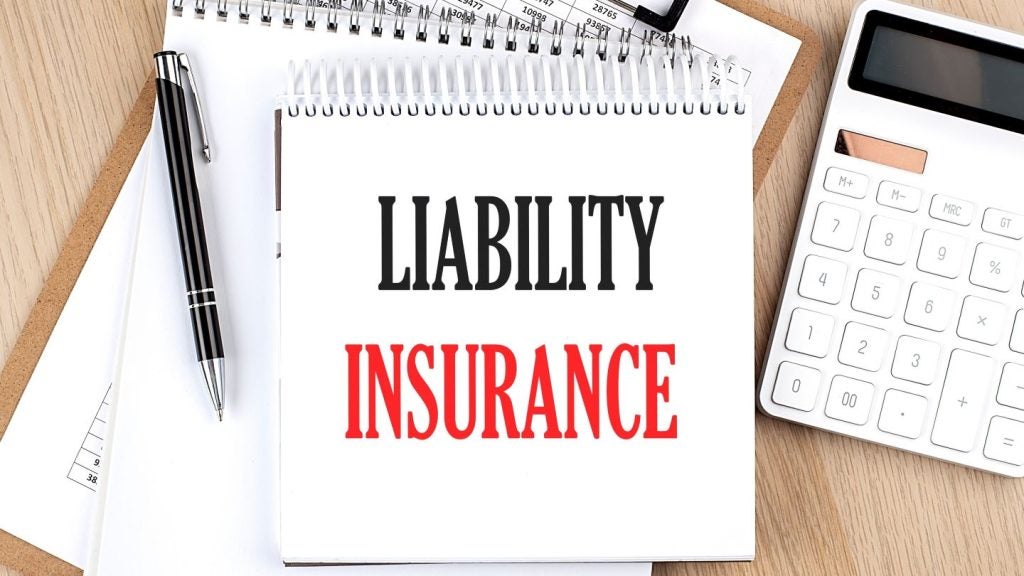Industry Attractiveness
The Indonesian insurance industry is at an initial stage of development and it significantly expanded between 2008 to 2012, recording a CAGR of 17.7%. The growth was primarily generated by the strong demand for stock market and investment-linked insurance products such as unit-linked and pension insurance. The expansion was further driven by the rising popularity of investment-related insurance products, the increasing penetration of microinsurance products, strong economic fundamentals, a growing middle-class population, surging passenger car sales and increased medical expenses. These factors are expected to remain buoyant, with the industry anticipated to post sizeable growth up to 2017, at a CAGR of 13.3%.
The industry is attractive due to its low penetration levels. Life insurance premiums as a percentage of GDP in Indonesia stood at 1.2% in 2011, as compared to 2.54% and 5.6% inMalaysia and Singapore respectively in the same year. The relatively low demand for and penetration of insurance products is primarily attributable tothe lack of public interest in using these products as a means of risk management and investment. This presents vast opportunities to potential entrants and existing companies in the industry. With the Indonesian population reaching 245.6 million as of July 2011and an estimated median age of 27.9 years, companies are presented with the significant potential to market life and non-life insurance products.
The industry’s growth was mainly driven by the robust demand in the life insurance segment, while the demand in the non-life segment lagged behind. In recent years, unit-linked insurance products have become increasingly popular since they were introduced in the Indonesian insurance industry in 1998. The demand for unit-linked products was driven by the flexibility that these products offer through a guaranteed fund value at maturity, along with the benefits of the coverage and the strong performance of the Indonesian capital market. Moreover, the demand from middle-class consumers is increasing as they turn to insurance as an asset class for investment. This is evidenced from a series of unit-linked product launches by insurance companies during 2011. For instance, WanaArtha Life launched WALink, a new unit-linked product in May 2011. Shariah-compliant insurance companies (Takaful companies) such as Aviva and PT Asuransi Takaful Keluarga also introduced unit-linked investment products using Shariah-based investment funds at the beginning of 2011.
Despite being the world’s most populous Muslim country, Indonesia’s Islamic insurance market lags behind Malaysia in terms of market size. Although Takaful product, a value added insurance product designed in accordance to shariah principles, have enjoyed rapid growth rates in Indonesia (50-60% in the late 2000s), the industry remains relatively undeveloped. However, Islamic insurance is gaining interest in Indonesia among several foreign companies, including Britain’s leading insurer Prudential, and Allianz, Manulife Financial Corporation, and France-based Axa. These multinationals expanded their presence in the respective market and enhanced the quality of takaful products and services.

Access deeper industry intelligence
Experience unmatched clarity with a single platform that combines unique data, AI, and human expertise.
Segment Outlook
The Indonesian life insurance segment posted positive growth, with the value of increasing at a CAGR of 19.5%. The strong economic growth recorded since the global financial crisis, Indonesia’s relatively youthful and increasing working population and the growing popularity of unit-linked products were the key drivers behind this growth. The number of unit-linked insurance products increased from 1.3 million in 2007 to 3.7 million in 2011, at a CAGR of 29.4%.
Indonesia’s favorable demographic factors include an increase in life expectancy from 62 in 1990 to 69 in 2010, the country’s large urban population base of 44% in 2010, and an expanding middle class population, which rose from 61% in 2007 to 63% in 2011. These positive demographic factors are likely to drive the growth of life insurance products such as unit-linked and term life products. The number of unit-linked policies sold is projected to rise from 3.7 million 2011 to 7.0 million in 2016. Meanwhile, the number of term life insurance policies sold is expected to increase from 1.7 million to 2.1 million in the same period.
The demand in the individual life insurance category is expected to remain strong. Increased awareness levels, product innovation and a relatively high return on investment are expected to promote the sales of unit-linked insurance products. Moreover, the regulatory authority’s proposal to widen the scope of unit-linked products to sovereign bonds and real estate investment trusts, as well as multinational companies’ bonds in which Indonesian companies have a stake, is expected to ensure further growth in the individual life insurance category.
With Indonesia currently having a relatively low insurance penetration rate, significant growth opportunities exist for the industry, which are likely to be taken advantage of by multi-national life insurers. Growth is expected to be driven by new product development, especially in the pension and group superannuation categories. Indonesia’s strong economic outlook is also expected to encourage consumers to invest in long-term savings products such as insurance policies.
Indonesian Islamic insurance (Takaful) recorded strong premium growth between 2008 and 2012. Indonesia still maintains a low insurance penetration rate of Takaful products of less than 2%, despite being the country with the world’s largest Muslim population. With a growing range of Shariah-compliant insurance products available to consumers and the country’s large rural population, education and initiatives targeted at increasing awareness among this group as vital for Takaful to achieve its full potential.
The International Monetary Fund (IMF) projects robust economic development for Indonesia – its GDP is projected to grow at annual rates of 6.1%, 6.6%, 6.9%, 7.0% and 7.0% during 2012-2016. This strong economic growth coupled with a rising capital market is likely to have positive impact on the Indonesian insurance industry.In addition, the Indonesian government’s favorable regulation for foreign inward investment, which allows 80% foreign ownership and proactive decisions, is likely to encourage global investors to participate in the high-profit-margin insurance industry. The government took several steps to stabilize the financial markets, including increasing the deposit insurance guarantee by twenty times to IDR2 billion and decreasing the bank reserve requirement. These initiatives helped the country to receive higher foreign investment.
Global analysts believe that Indonesia is likely to become the newest member of the BRIC grouping of the leading emerging markets. Fitch Ratings upgraded Indonesia’s sovereign debt rating to investment grade in December 2011 and similar ratings can be expected from the other reading credit rating agencies such as Standard and Poor’s and Moody’s.
A key challenge for life insurance companies operating in Indonesia will be the forthcoming changes in the country’s regulatory environment that aim to increase the financial stability of insurance companies operating in the country. These new regulations could trigger increased M&A activity in the industry, as smaller companies find it difficult to meet the new capital requirements, while larger companies look to increase their market share.
Distribution Channels
The Indonesian life insurance segment posted impressive growth in gross written premiums value, at a healthy CAGR of 19.5% between 2008 and 2012. Apart from selling life insurance products directly to customers, there were numerous other distribution channels such as financial brokers, bancassurance, agencies, call centers and post offices which enabled life insurance companies to generate business.
In 2011, agencies generated 49.1% of the total new business written premiums in the life insurance segment. The primary reason for this strong preference was that Indonesia is made up of a large group of islands, making a broad network of agents the most efficient way to sell, promote and manage insurance products across the entire population. Moreover, the channel offers insurance companies a large client base, strong brand reputation and an existing sales force at a relatively low cost. Agent networks also have close relationships with insurers and pension providers, and operate according to the interests of the insurer they are working for. Leading companies include PT Asuransi Jiwa Sinar Mas, which employed a large network of more than 12,000 agents as of September 2011.
The agencies channel is projected to retain this dominant position, as prospective customers are expected to continue to prefer face-to-face interaction when purchasing insurance. Furthermore, in an attempt to remain competitive and retain market share, life insurance companies operating in Indonesia are increasingly focusing on developing a qualified team of insurance professionals and agents, although any sustained professional development is challenged by the high risk of rival insurers stealing the best-performing agents. As a result, the number of policies sold through agencies is expected to increase from 1.5 million in 2011 to 2.0 million in 2016, recording a CAGR of 6.7%.
Bancassurance was the second-largest distribution channel, accounting for 22.2% of the total new business written premium generated in the life insurance segment in 2011. The number of policies sold through bancassurance increased from 339,800 in 2007 to 666,500 in 2011, registering a CAGR of 18.3%.
The development of the bancassurance channel was primarily driven by the growing number of working people buying insurance products in banks rather than from agents due to reasons such as convenience, competitive pricing and the strong reputation of banks in the country.
Direct marketing was the third-largest distribution channel in the Indonesian life insurance segment, accounting for 11.8% of total new business written premiums in 2011. Through this channel, insurers sell simple protection products such as term and personal accident insurance, together with more specialized products such as hospitalization and critical illness cover, using a combination of direct mail and telemarketing. Although traditionally favored by large insurance companies, the channel is becoming increasingly popular among small and medium-sized insurance companies due to its relatively low associated costs and low volume of paperwork. The number of policies sold directly to customers increased from 246,400 in 2007 to 353,100 in 2011. This is expected to reach 450,100 in 2016.
The emergence of e-commerce has intensified the demand for insurance products as a result of its convenience and cost advantages. Online sales of insurance products recorded the fastest growth in the Indonesian life insurance segment. The number of policies sold online increased from 12,100 in 2007 to 29,400 in 2011, and the number of service providers rose from 451 in 2007 to 595 in 2011. The number of polices sold through other distribution channels, including shopping malls, decreased from 216,400 in 2007 to 214,400 in 2011. This decline was mainly due to the growing popularity of e-commerce and bancassurance channels.
Indonesian life insurers are expected to begin to use other marketing channels, such as online portals, discount chains and convenience stores, as increased competition forces them to explore new sales opportunities. With cell phone penetration steadily increasing in Indonesia, mobile marketing could also prove to be a lucrative marketing channel for insurance products.

US Tariffs are shifting - will you react or anticipate?
Don’t let policy changes catch you off guard. Stay proactive with real-time data and expert analysis.
By GlobalDataMarket Developments
Prudential Indonesia launches first micro insurance product
PT Prudential Life Assurance (Prudential Indonesia) has launched PRU-aman, the company’s first micro insurance products.
The company said that PRU-aman will provide low-income households financial protection with affordable and easily accessible when facing life-changing events through microfinance Institutions and rural banks.
Microfinance institutions benefit froom essential loan protection insurance, which is expected to promotoe a healthier microfinance in Indonesia.
PRU will provide four secure insurance packages with a very affordable rate, as low as IDR 2,000 per year. Across the four plans, the benefits range from simple repayment of outstanding loans to loan repayment with a variety of additional financial benefits for families.
Bank BJB to Acquire Insurance & Multifinance
PT Bank Pembangunan Daerah Jawa Barat & Banten Tbk (BJBR) or Bank BJB plans to acquire the general insurance companies and finance companies this year. According to the directors, the company has budgeted Rp 200 billion for the acquisition of the two companies.
Subiantoro Bien, Director of Bank BJB, said the company has conducted due diligence on the acquisition of the two companies. “We have already closed a deal, but we can not mention the companies’ names,” said Bien told IFT, Monday.
Bien expects the acquisition process can be completed in the first half of 2013.







